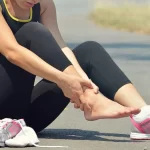Carpal Tunnel Syndrome (CTS) is a common condition affecting anyone who spends long hours working at a desk or using their hands for repetitive tasks. It is characterized by numbness, tingling, and pain in the hand and wrist. CTS occurs when the median nerve is compressed as it travels through the carpal tunnel, a narrow passageway in the wrist.
If you’re spending most of your workday typing, using a mouse, or performing repetitive hand movements, it’s essential to take preventive steps. Here are some ergonomic tips and stretching routines that can help you avoid CTS and keep your wrists healthy.
Ergonomic Tips to Prevent Carpal Tunnel Syndrome
Creating a comfortable and supportive work environment can make a big difference in preventing wrist strain and the development of CTS. Here’s how to optimise your workstation:
Adjust Your Desk and Chair Height
The height of your desk and chair plays a crucial role in maintaining proper wrist posture. Your forearms should be parallel to the floor when typing, with your wrists in a neutral position. If your desk is too high or too low, it can force your wrists into awkward angles, increasing your risk of CTS.
- Tip: Your elbows should form a 90-degree angle or slightly more when your hands are on the keyboard. Adjust your chair or use a keyboard tray to achieve the correct height.
Use a Wrist Rest
A wrist rest can help reduce pressure on your wrists and prevent them from bending while typing or using the mouse. Look for one made of soft material that provides support without pressing directly on your wrists.
- Tip: Your wrists should be straight or slightly elevated while typing. Avoid letting them rest on the desk or edge of the keyboard.
Keep Your Keyboard and Mouse Close
Position your keyboard and mouse so that they’re easily accessible without stretching or straining your arms. Keeping them too far away forces you to extend your arms, leading to unnecessary tension in your wrists and forearms.
- Tip: Your mouse should be at the same level as your keyboard and within a comfortable distance to avoid reaching.
Choose Ergonomic Tools
Using an ergonomic keyboard and mouse can greatly reduce the risk of CTS. Ergonomic keyboards are designed to keep your wrists in a more natural position, while ergonomic mice can reduce the strain of repetitive motions.
- Tip: Try using a vertical mouse or one with a trackball, which can reduce wrist movements compared to traditional mice.
Take Frequent Breaks
Even with the best ergonomic setup, sitting in the same position for hours can cause strain. Frequent breaks give your muscles and joints a chance to rest and recover.
- Tip: Follow the 20-20-20 rule: Every 20 minutes, look away from your screen for 20 seconds and stand up to stretch or walk for 20 steps.
Stretching Routines to Prevent Carpal Tunnel Syndrome
Incorporating stretching exercises into your day can help prevent tightness in your wrists and forearms, reducing your risk of CTS. Here are some simple stretches you can do at your desk:
1. Wrist Flexor Stretch
This stretch targets the muscles in the front of your forearm, helping to relieve tension in your wrist.
- How to do it: Extend one arm in front of you with your palm facing up. With your other hand, gently pull back on your fingers until you feel a stretch along the underside of your forearm. Hold for 15–30 seconds, then switch to the other arm.
2. Wrist Extensor Stretch
This stretch focuses on the muscles on the back of your forearm, which can become tight after long periods of typing or using a mouse.
- How to do it: Extend one arm with your palm facing down. Use your other hand to gently press down on the back of your hand, bending your wrist downward. Hold for 15–30 seconds, then switch to the other arm.
3. Prayer Stretch
The prayer stretch is great for loosening up your wrists and forearms while seated at your desk.
- How to do it: Place your palms together in front of your chest, with your fingers pointing upward (like a prayer position). Slowly lower your hands toward your waist while keeping your palms pressed together. Hold the stretch for 15–30 seconds.
4. Shake It Out
This simple movement helps release tension from your wrists and hands.
- How to do it: Gently shake your hands out as if you’re trying to air-dry them after washing. Do this for 10–15 seconds to improve circulation and relieve tightness.
5. Finger Stretch
Stretching your fingers helps relieve the tension that can build up after hours of typing or using small, repetitive motions.
- How to do it: Hold your hand out in front of you, palm up. Spread your fingers as wide as you can, then slowly bring them together. Repeat 10 times.
Creating a Healthy Work Routine
In addition to following these ergonomic tips and stretching exercises, consider adopting healthy work habits to reduce the overall risk of developing Carpal Tunnel Syndrome:
- Mix up tasks. Alternate between typing, using a mouse, and other tasks to give your hands a break from repetitive motions.
- Stay hydrated. Drinking water helps maintain the health of your joints and muscles.
- Maintain good posture. Keep your back straight and shoulders relaxed while sitting to reduce strain on your entire upper body.
By optimising your workspace and incorporating simple stretches into your daily routine, you can significantly reduce the risk of developing Carpal Tunnel Syndrome and protect your hands and wrists from long-term damage. Remember, the key to preventing CTS is staying proactive and making small adjustments that can have a big impact on your comfort and well-being.










